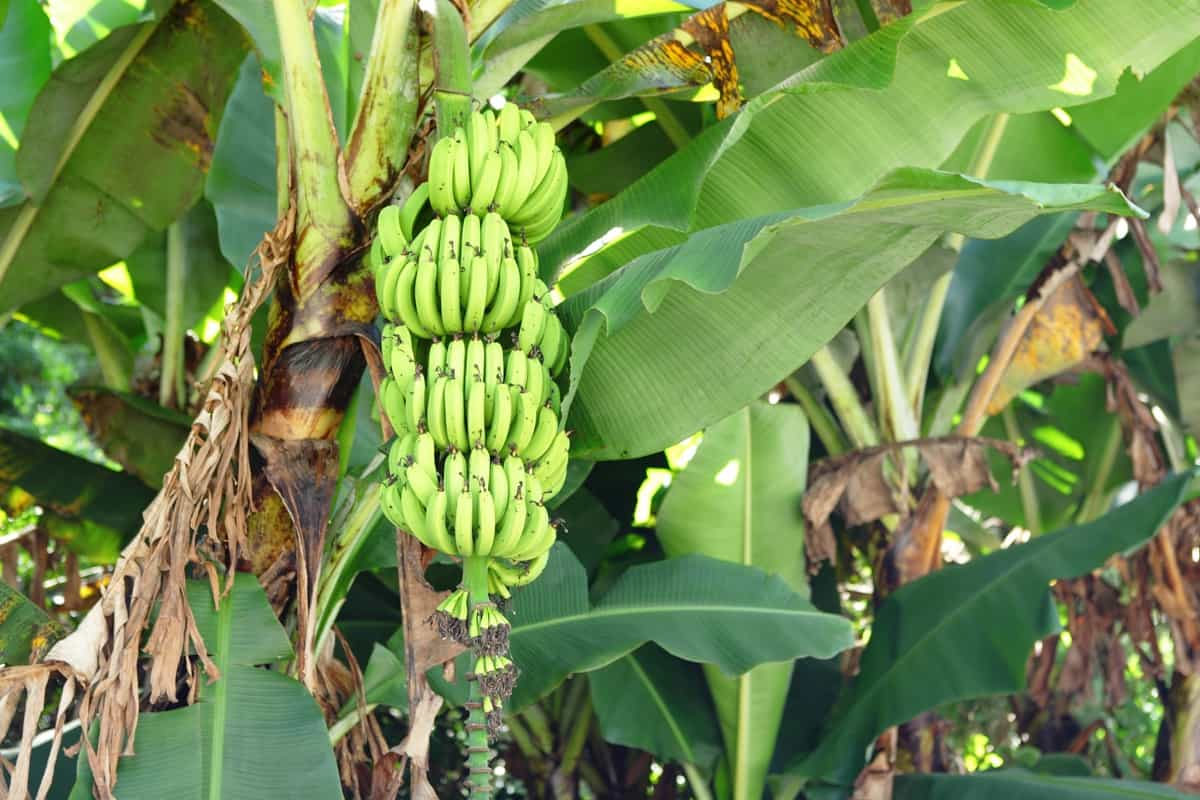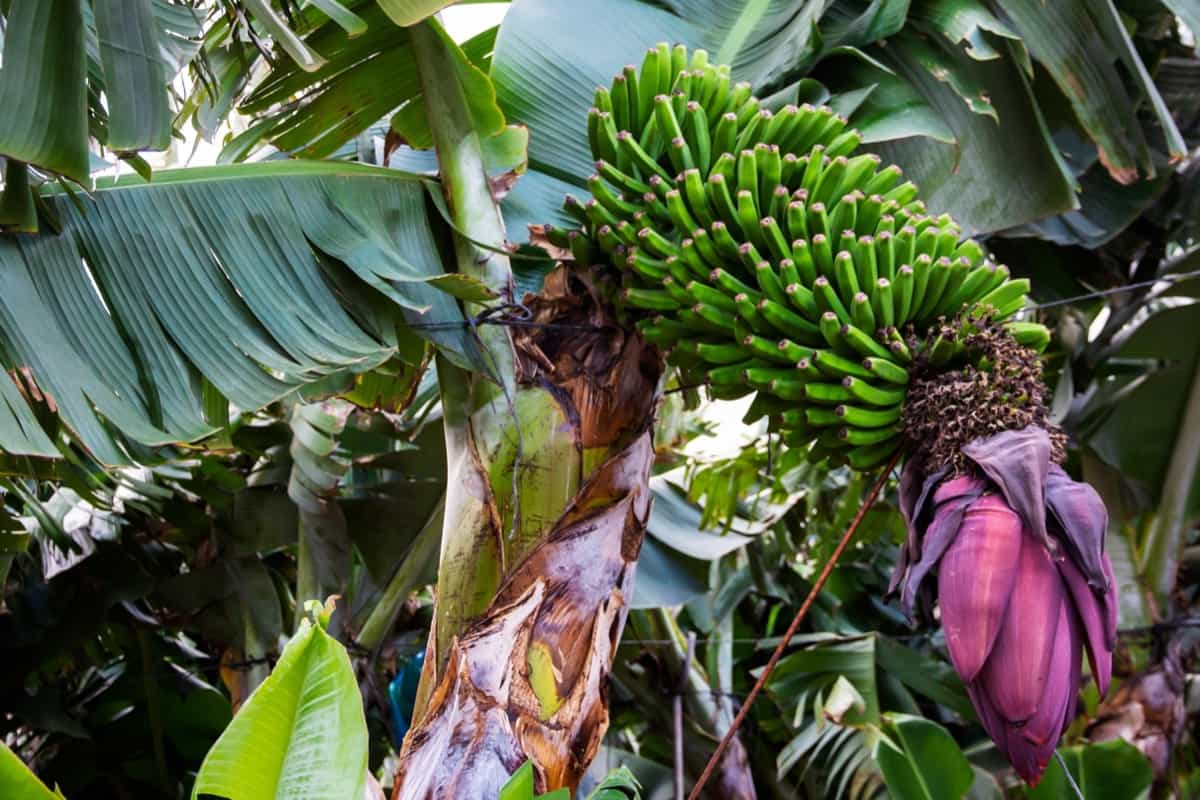Banana Choke Throat is a complex physiological disorder affecting Banana crops’ productivity and profitability. Banana Choke Throat is a physiological disorder affecting Banana crops, causing them to produce low quality and quantity yields. Effective management of Choke Throat in Banana crops is a significant challenge for farmers, as it needs constant monitoring and efforts to tackle the problem.

Strategies proposed to manage the effects of Choke Throat include cultural practices, such as shelterbelts and windbreaks. However, their effectiveness may depend on the specific conditions of the crop and the variety of bananas grown. Choke Throat is a significant concern for banana growers and exporters as it can lead to significant financial losses.
It is, therefore, crucial to understand the disorder’s underlying mechanisms and identify effective management strategies to mitigate its impact. This article provides an overview and discussion of Choke Throat, including its symptoms, causes, and management strategies, to aid in sustainable banana production, effective control, and prevention of this physiological disorder in banana crops, ensuring profitable returns from this crop.
Banana Choke Throat and Chilling Injury Disorders Management
Characteristics of Banana Choke Throat Disorder
- The Banana Choke Throat physiological disorder is a post-harvest disorder that affects the fruit’s quality, causing it to develop brownish, hard, and corky tissue around the core of the fruit.
- The distal part of the inflorescence comes out of the pseudostem, but the basal part becomes pointed at the throat and does not emerge properly, causing the choking symptom.
- This disorder is characterized by the appearance of dry and fibrous tissue in the central part of the fruit, leading to the choking of the fruit’s throat and rendering it inedible.
- The disorder is primarily located around the core of the fruit and affects the edible part of the banana.
- It usually appears during transportation or storage, making the affected fruit unsuitable for export.
- The size and shape of the affected fruit remain the same as the healthy ones, but the internal structure of the fruit is severely damaged.
- The affected fruit may also exhibit uneven ripening, with some parts remaining green while others turn yellow.
- The yield of the affected plants is significantly reduced, with some farmers experiencing losses of up to 70%.
- The disorder usually appears two to three weeks after the fruit is harvested and stored.
Causes of Banana Choke Throat Disorder Development
- Extreme high and low temperatures can cause tissue damage, leading to the development of the disorder.
- High humidity can lead to the development of fungal infections, which can cause tissue damage and trigger the onset of this disorder.
- The deficiency of essential nutrients, such as calcium and boron, can lead to the development of this disorder, with calcium deficiency being the most reported nutrient deficiency in banana crops.
- Improper post-harvest handling of fruits harvested at an immature stage or subjected to mechanical injuries during harvesting, transportation, and storage are more susceptible.
- The disorder can also be caused by genetic factors, with some banana cultivars being more susceptible than others. It primarily affects the Cavendish banana variety, the most-grown banana cultivar globally.
- Hormonal imbalances, such as high levels of ethylene, can cause tissue damage and trigger the onset of the disorder.
Favorable Conditions of Banana Choke Throat Disorder
- Temperatures above 32 °C and below 8 °C are favorable conditions for this disorder in banana crops.
- High temperatures can accelerate ripening and lead to uneven ripening.
- Rain and high humidity above 90% result in the development of this disorder.
- High humidity levels can develop water-soaked lesions, further exacerbating the disorder.
- A prolonged drought or waterlogging can cause stress to Banana trees, resulting in a lower yield in the subsequent season.
- Lack of calcium in the soil can develop the disorder. Calcium plays a crucial role in maintaining the structural integrity of the fruit.
In case you missed it: Banana Kotta Vazhai and Finger Drop Disorders Management: Symptoms, Causes, Favorable Conditions, and Treatment

Management Measures of Banana Choke Throat Disorder
- Foliar applications of calcium and boron can be sprayed to supplement the nutrients during the growing season.
- Measures such as shade, misting, and ventilation can be taken to regulate temperature and humidity levels.
- Use Casuarina or Eucalyptus trees as a shelterbelt to shield the banana crops from cold winds.
- Fruits should be harvested at the appropriate maturity stage.
- Mechanical damage during harvesting and handling should be minimized.
- Proper storage conditions, such as low temperatures and appropriate humidity levels, can help prevent the disorder.
- Use temperature stress-tolerant varieties.
- Post-harvest treatments such as hot water dips, ethylene treatments, and modified atmosphere packaging can be effective.
- Hot water dips can help prevent fungal infections, while ethylene treatments regulate fruit ripening.
- Modified atmosphere packaging can help regulate temperature and humidity levels during storage.
Banana Chilling Injury Physiological Disorder
Banana Chilling Injury is a physiological disorder that affects Banana fruits due to exposure of the fruits to lower temperatures. Banana Chilling Injury is a post-harvest physiological disorder that can significantly affect the quality and shelf life of the bananas, leading to economic losses for Banana farmers. Efforts to manage banana chilling injury require a combination of pre-harvest and post-harvest measures.
This includes pre-harvest treatments, such as selecting cultivars with improved cold tolerance and implementing optimal harvesting practices, and post-harvest treatments, such as using controlled atmosphere storage and heat treatments and the application of chemical agents. This article provides an overview of Banana Chilling Injury Disorder, including its symptoms, causes, and management strategies, to aid in the development of effective control measures and improve Banana production.
Characteristics of Banana Chilling Injury Disorder
- The disorder affects the fruit’s appearance, texture, flavor, and nutritional value, reducing the market value and consumer acceptance.
- Chilling injury symptoms include uneven ripening, wet, dark patches on the skin, dull yellow to the smoky yellow color of the ripening fingers, softening, and internal breakdown of fruit tissues.
- Discoloration and browning of vascular bundles occur due to the enzymatic oxidation of dihydroxy phenyl-alanine.
- The disorder also affects the fruit’s flavor and aroma, leading to a loss of quality. The fruit may have a bitter or astringent taste and an unpleasant odor.
- The chilling injury also affects the fruit’s nutritional value, losing essential vitamins and minerals. The disorder may cause the fruit to lose its firmness and juiciness, reducing its nutritional content.
- These symptoms are more pronounced when the fruit is exposed to low temperatures for extended periods, and they become irreversible, leading to the fruit’s ultimate decay.
Causes of Banana Chilling Injury Disorder Development
- Banana chilling injury is caused by exposure of the fruit to low temperatures during transportation, storage, and distribution, which causes various physiological changes in the fruit’s tissues.
- Several factors contribute to banana chilling injury, including cultivar susceptibility, harvesting practices, packaging, storage temperatures, and duration of exposure to low temperatures.
- Some cultivars are more susceptible than others because each cultivar has different physiology and metabolism that responds differently to low temperatures.
- Packaging that does not allow proper air circulation or traps moisture can contribute to the development of the disorder.
- When bananas are stored at low temperatures, the metabolic rate of the fruit slows down, leading to changes in the fruit’s physiology and metabolism.
- Extended exposure to low temperatures can cause irreversible damage to the fruit’s tissues, leading to decay.
Favorable Conditions of Banana Chilling Injury Disorder
- The disorder is most severe when the fruit is exposed to temperatures below 13°C.
- High humidity can lead to moisture accumulation on the fruit’s surface, promoting the growth of fungi and bacteria.
- Immature fruit has a higher risk of developing the disorder than mature fruit because its tissues are more sensitive to low temperatures.
- High levels of ethylene increase the fruit’s metabolic rate, making it more susceptible.
- Physically injured fruits due to bruising and cutting are more susceptible.
In case you missed it: Banana Black Spot or Freckle Disease Management: Symptoms, Treatment, Chemical, Biological, and Organic Control

Management Measures of Banana Chilling Injury Disorder
- Plant banana cultivars that are less susceptible to chilling injury.
- The fruit should be harvested when fully mature, not over or underripe.
- Store the bananas immediately after harvest at temperatures between 14°C to 18°C.
- Packaging materials should be able to maintain optimal storage temperature and humidity levels.
- Washing and waxing can help by removing dirt and debris from the fruit’s surface and providing a protective layer that helps to prevent moisture loss.
- Calcium treatments help to strengthen the fruit’s cell walls.
- Deworming Schedule for Dogs/Puppies: A Beginners Guide
- How to Prevent and Control Parasites in Goats
- Beneficial Insects in Pest Management
- Natural Solutions for Pest Control in Flower Gardens
- Types of Fungicides Used in Agriculture
- Common Issues in the Fruit Development Stage of Pomegranate Farming
- Fruit Development Issues in Papaya: Easy Solutions and Treatment
- Soil-Borne Diseases and How to Protect Your Plants
- Practices to Prevent Disease Spread in the Garden